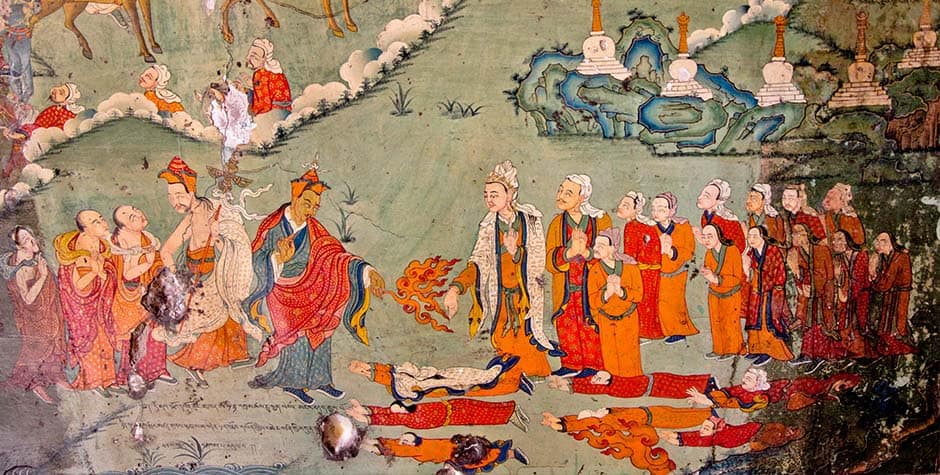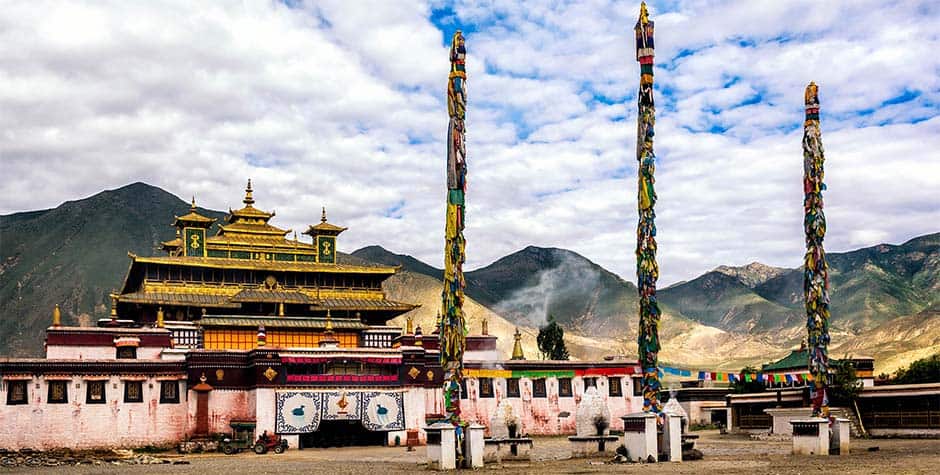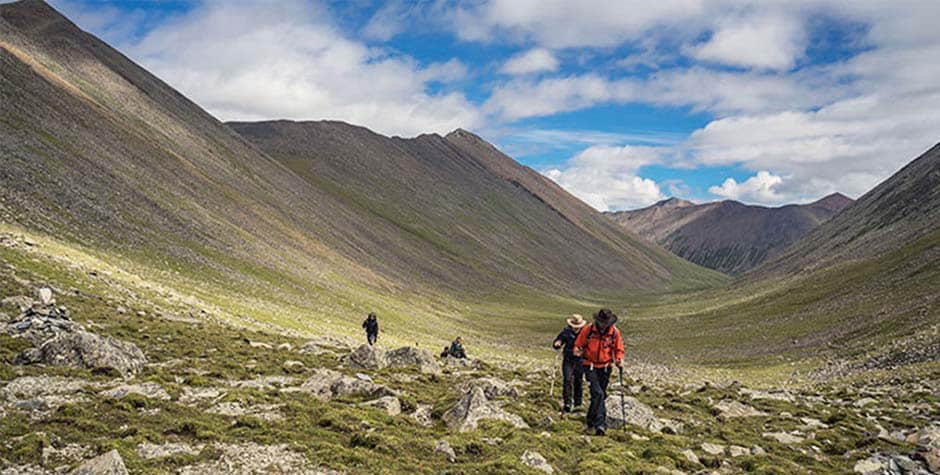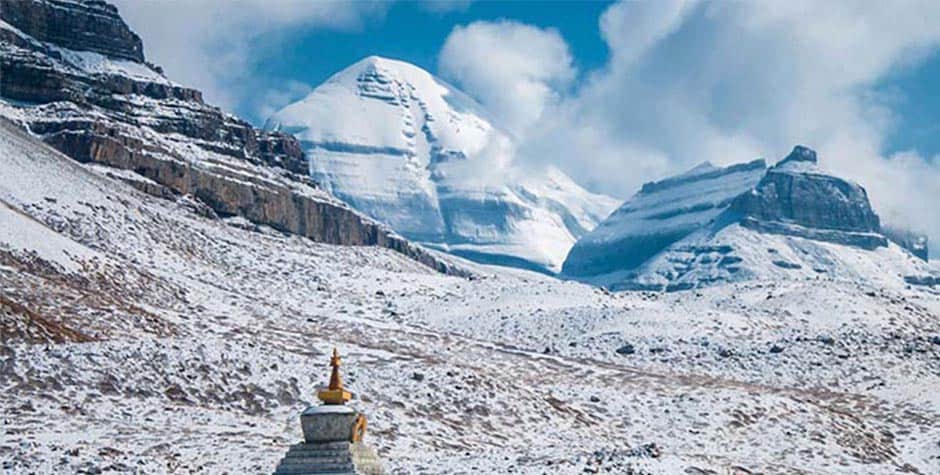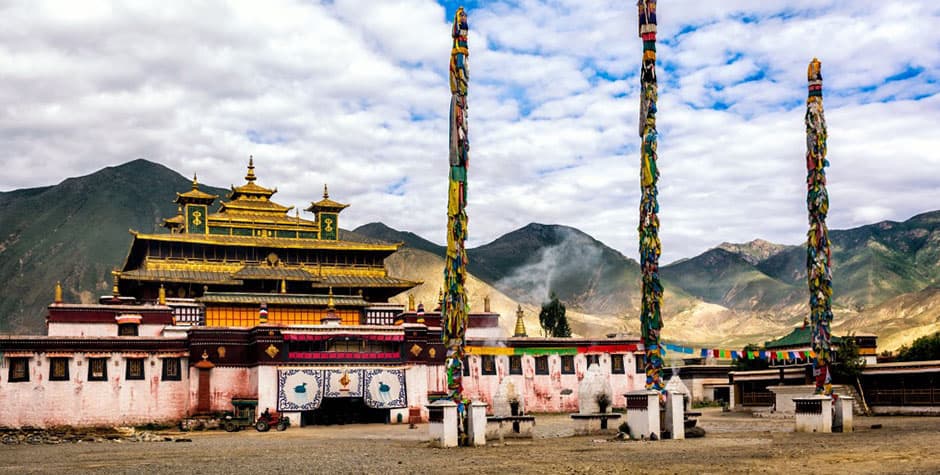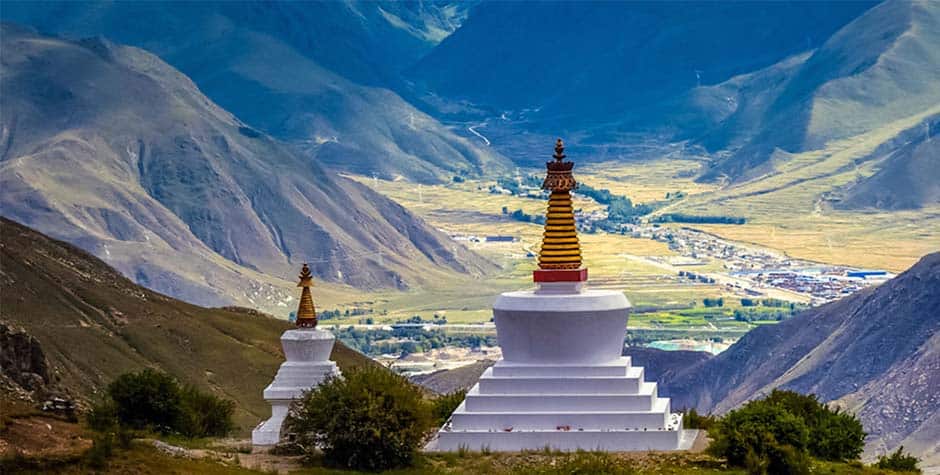Samye Monastery is located in Lhokha Prefecture of Tibet. It is 196 Kilometer from Lhasa. The monastery is the first Buddhist monastery founded in the 8th century. It is well known for its sacred mandala design, featuring a central temple that represents the legendary Mount Meru. It is the most important pilgrim site in central Tibet, with the Ganden to Samye Trekking route as its traditional route from Lhasa.
History of Samye Monastery
Samye Monastery is Tibet’s first Buddhist monastery in Tibetan History, constructed probably between 775 AD and 779. King Trisong Detsen, revered by Tibetans as a manifestation of Manjushri, ascended to the throne at the young age of 13. To formally establish Buddhist monasticism in Tibet, he invited Shantaraksita of Zhor with the assistance of Be Trizhi. King Songtsen Gampo and his queens have been constructing Buddhist geometric temples in Tibet for some 130 Years.
Due to the hostility of Bonpo aristocratic families, the formal Buddhist institution has not merged. So, Trisong Detsen invited Guru Padmasambhava to subdue the hostile elemental forces of Tibet and make them subservient to Buddhism. To transform the Negative power into a Buddhist protector, he traversed the entire plateau. On the summit of Hepori Hill, he crushed the local demons and consecrated the site for the construction of Tibet’s first monastery. Here, he introduces the highest tantras and their teaching to 16 fortunate disciples.
The architecture of the monastery is based on that of Odantapuri in modern-day Bihar, India. The monastery is where Santarakita belongs. The design represents the three-dimensional mandala of Buddhist cosmology. The center of the Tibetan Buddhist universe is a mythical palace located at the summit of Mt. Meru, which in Samye is symbolise by the main temple, the Utse. Surrounding this is a vast “ocean” comprising four major island continents and eight subcontinents.
Between the 8th and 10th centuries, the preceptors of the monastery were highly esteem both socially and politically. Throughout our history, the site has been influenced by various schools of Tibetan Buddhism. Therefore, the site is now rever by all the primary schools of Tibetan Buddhism.
Throughout history, the monastery has been destroy on multiple occasions, and its original structure is no longer intact.
Tourist Guide to Samye Monastery
For the year 2025, there is no need to obtain an Alien Travel Permit (one of the many Tibet Travel Permits required in Tibet) for your visit to Tsedang. For a more authentic Tibetan experience, it is better to stay in Samye Monastery than in Tsedang town, as staying in Tsedang town gives you fewer opportunities to explore Village life in Tibet. You will also have some free time to explore the garden located within the inner wall of the first monastery in Tibet.
Suppose you would like to explore more about the Guru Rinpoche and Buddhist History in Tibet. There are other sites nearby, such as Chimphu Hermit, Zong Kumbum Cave, and Dar Yangzom Caves. Each of these caves and hermitage takes a day for extended hiking. We’d like to recommend our ‘Tracing the Footprint of Guru Rinpoche’ tour to you.
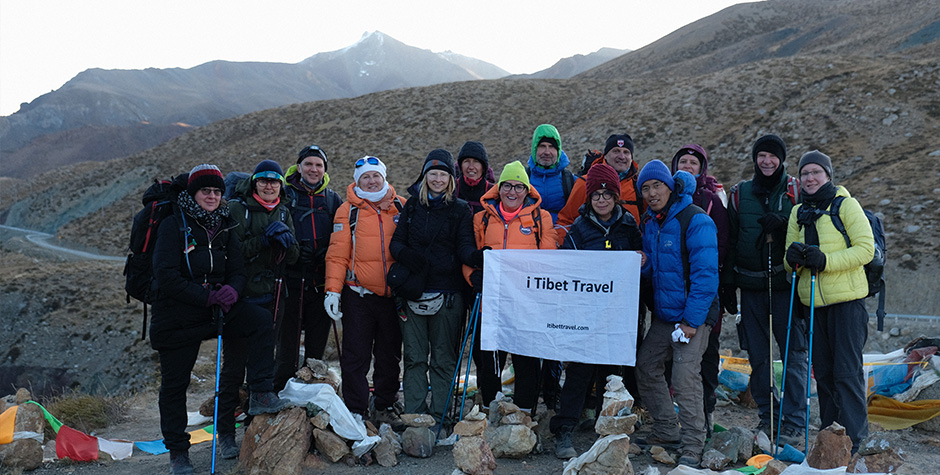
Tenzin Travel is the best Tibetan Travel agency in Tibet. Our agency is one of Tibet’s most experienced tour operators, with over 20 years in the industry. Founded by a local Tibetan family with decades of expertise as guides, managers, and route planners. We craft personalized itineraries for every traveler. Our agency is the highest-rated and most recommended Tibet travel agency on TripAdvisor, Google, and Lonely Planet.
We can make holistic arrangements for your trip to Tibet. Including a Tibet Travel Permit, a Tibetan tour guide, flight tickets, train tickets, vehicle arrangements, and hotel bookings in Tibet.
Our Lhasa office is just steps from Barkhor Square. All our Tibetan team ensures deep cultural, linguistic, and religious insights, setting us apart from other agencies.
Beyond tourism, we support Tibetan communities by donating a portion of each tour to local projects. Your travel to Tibet is about more than profit—it’s about the opportunity for us to give back.


